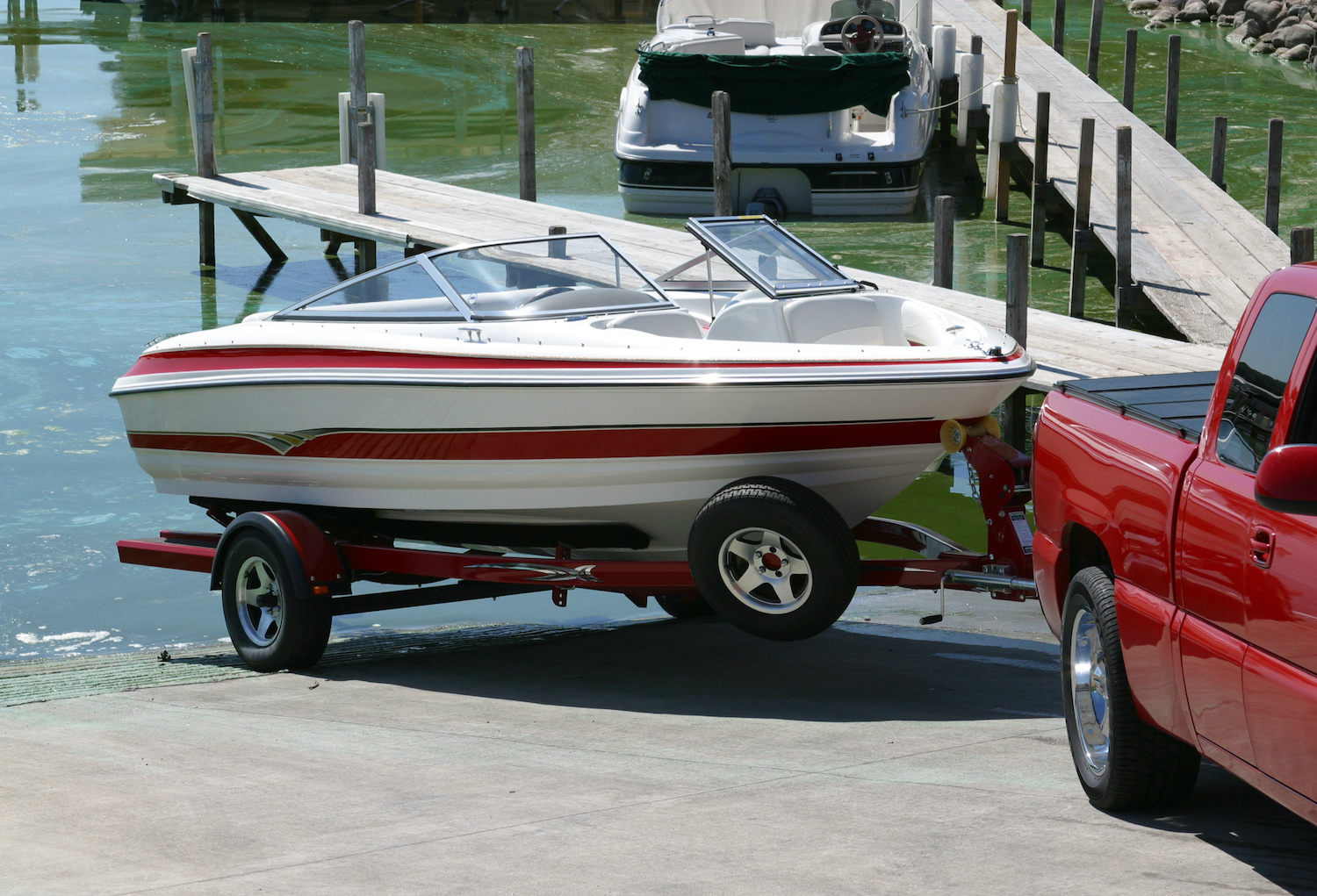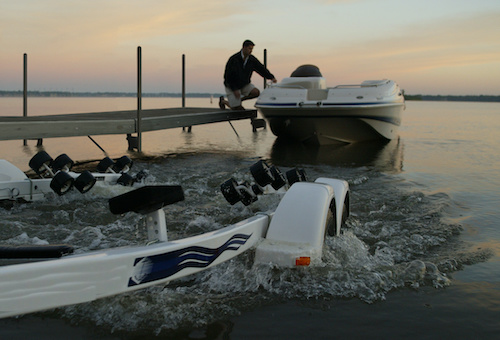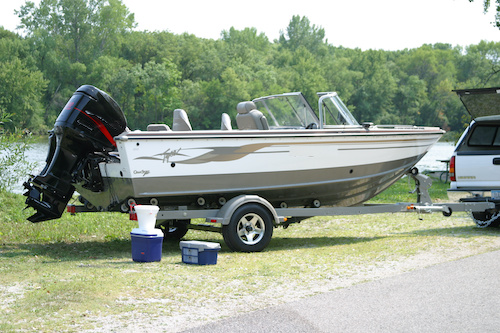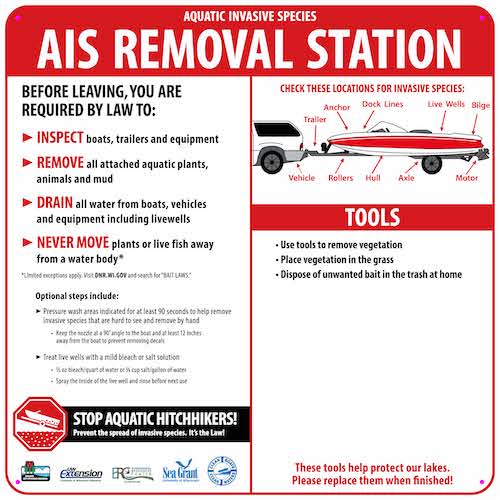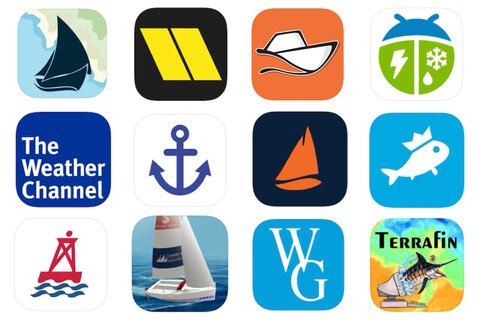Every boater should know the Rules of the Road—or what's also come to be known as basic "boating etiquette" for safe, courteous navigation—before pulling away from the dock. However, there's another set of mostly unwritten rules comes into play at the launch ramp.
A popular boat ramp can be a busy place, especially on a summer weekend. The process of launching and retrieving hundreds of boats is like running a circus with no ringmaster—so etiquette, custom and courtesy are all that stand between good order and havoc. A good boat owner takes pride in appearing ship-shape at the ramp and contributing to efficiency. Those who are unprepared, or just oblivious, can mess things up in short order. So don’t be that boat owner.
Let's go over some of the basics of boat ramp etiquette, starting with a few tips that will make your launching and retrieving process smooth and stress-free.
5 Tips for Good Boat Ramp Etiquette
- Always complete all prep work first in the staging area—out of the way of ramp where other boaters are launching.
- Launch quickly and efficiently; have others in your crew assist you to make the process easier, if possible.
- As soon as the boat is off the trailer, pull back up the ramp and park in a designated spot.
- When retrieving your boat, use a courtesy dock or tie up away from the launch area until your trailer is in place.
- Load the boat onto the trailer, secure the winch at the bow and the safety chain; then proceed to the staging area to finish unloading and securing your trailer.
Prepping Your Boat for Launch
If this is your first time at the launch site, park out of the way and take a minute inspect the ramp and dock—check the water depth, which side the dock may be on when you launch, and the flow of traffic as other boaters line up to launch.
Your goal is to be as efficient as possible when it’s your turn to actually back down and launch. With that in mind park in a designated staging area, or out of the way or traffic, to prepare your boat and do the following:
- Visit the pay station and take care of a launching fee if one is required.
- Install the boat drain plug.
- Check that the key is in the ignition. This would be a good time to bump the key into the “start” position just to make sure you don’t have a dead battery.
- Load all your gear into the boat—fishing tackle, coolers, tubes, skis, etc.
- Attach fenders to the dock side of the boat.
- Remove the transom tie-down straps and the outboard motor brace if you use one.
- Attach dock lines to the bow and stern cleats.
- Unplug the trailer lights from the tow vehicle to keep cold water from damaging the hot bulbs.
Launching Your Boat & Parking Your Tow Vehicle
Now you are ready to back down the ramp and launch. If you have a crew give everyone instructions on how to help, or how not get in the way. If someone is available to drive the boat off the trailer, that person can put on a PFD (personal floatation device) and get into the boat and be ready to start the engine and pull away.
- Start the engine before releasing the boat from the trailer. This way if your engine will not start you can simply drive back up the ramp to trouble shoot.
- Either use dock lines to walk the boat down a dock and away from the launching area, or have your driver move the boat out of the way.
- Your boat driver may wait on the water while you park and pick you up from the end of the dock, or move the boat away from the launch area and tie up.
As soon as the boat is safely off the trailer, pull back up the ramp and park in a designated spot.
Retrieving Your Boat
Reloading the boat on the trailer is simply the reverse of launching. Drop the vehicle driver and passengers off on a dock. If there’s a courtesy dock or dock away from the launch area, it’s OK to tie up while you wait for the trailer. If not, move the boat away from the ramp area and wait for the trailer to be backed down.
- The driver gets the vehicle in line—if there is a line—to take a turn backing down the ramp.
- The boat driver needs to pay attention and be in position to approach the ramp when the trailer is in the water.
- Load the boat on the trailer. Secure the winch at the bow and secure the safety chain.
- The boat driver can stay in the boat while you pull up the ramp.
- Drive to the staging area, or away from traffic, to unload coolers and gear from the boat, secure transom straps, trailer lights and get ready to hit the road.
How to Load a Boat on a Trailer
Don't Forget to Clean, Drain, Dry
Before driving away it’s important—and in most places, the law—to remove weeds from the boat and trailer and to drain the bilge, live wells and bait wells before driving away from the ramp. This best practice has been coined, "Clean, Drain, Dry."
This prevents the spread of invasive species like milfoil and zebra mussels. There may be signage at the ramp with guidance for this procedure, or check with your state DNR for local regulations. Learn more by visiting StopAquaticHitchhikers.org.
Read Next: Towing & Trailering Guide
You May Also Like:
